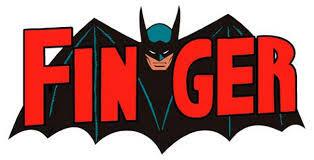According to The Sporting News, Philadelphia is the ninth-best sports city in the magazine's newest ratings. That's down from No. 2 (behind Boston) last year. Chicago jumped up to the top spot in the rankings, followed by Miami... yeah, Miami. The city where they fill up the ballpark for Marlins games (insert sarcasm font). Here's The Sporting News' full list of the 99 top sports towns.
Just for fun, I'm going to rate my top sports towns under the following criteria:
* Participating in sports is more important than spectating. If the city's claim to fame is fighting at the parking lot tailgate party before the game or firing a flare gun across the field during Monday Night Football, chances are that town isn't going to rate as high as the one with a 10K every weekend or a top-notch marathon or cycling race.
* The city has to be one that I have visited in the past decade. That eliminates most of the midwest right there.
Here we go:
1.) Denver-Boulder This is the sports Mecca. There are at least 60 Olympics athletes currently living in Boulder County, which is less than 30 miles north of downtown Denver. For those who like playing sports, Boulder is the best city in the U.S., but for those who would rather watch others, University of Colorado, Colorado State and the Air Force Academy are very popular for the college fans, while the pros are represented in every major league sport, including the NHL.There's also a fairly large PGA event, NASCAR races, and the weekend warrior bit happening constantly. That's the way it is when there are 300 sunny days a year.
Of course, the entire state of Colorado shuts down when the Broncos play, but that's nothing new.
2.) Washington, D.C. Remember, this is my list. And yes, sports fans in D.C. are a rather apathetic lot since the real spectator sport in this industry town is politics. However, the Redskins are about as popular as sports franchise can get. I remember when I was a kid growing up in the area that the waiting list for Redskins season tickets was 154 years. People who wanted to watch an NFL game had to drive all the way to Baltimore.
They don't have to do that to watch baseball anymore now that the Nationals have brought baseball back to the District. The attendance for Nats games isn't the greatest, but the enthusiasm for the team is pretty high.
Fans in the District seem to get excited about their little niche as opposed to the NHL and NBA. Lacrosse is popular and so is the University of Maryland and Georgetown hoops. Bigger still are the D.C. United in the MSL. That one franchise could be keeping the entire league afloat.
More importantly, the D.C. area has some of the bst golf courses in the country and some of the best urban and cycling trails anywhere. Between Rock Creek Park and the C&O Canal path, runners and riders can take off for days without retracing their steps. For those who prefer to be in the heart of the city, the Mall is a great place to log those miles. The last time the Phillies travelled to D.C., I put in a 13-miler that took me around all of the monuments on the Mall, through Capitol Hill and past the congressional office buildings, the Library of Congress, the Supreme Court, and the Capitol, before heading to RFK Stadium to loop back to the other side of the Mall.
Man, was that ever fun.
D.C. also has the Marine Corps Marathon, which, aside from the start and the transportation to the race, is one of the best organized races out there. Plus, the D.C. running scene is top notch, too. I remember watching Bill Rodgers win the Cherry Blossom 10-miler in the late 1970s (maybe '79).
Enough of D.C.
3.) Boston See Washington, but with more sports enthusiasm for its teams. Plus, the Charles River running path is a lot of fun, and the Boston Marathon is the greatest sporting event in the world.
No, I'm not exaggerating.
4.) Chicago Actually, Chicago should probably be ranked higher, but I haven't been there in a long time, unless the airport counts.
5.) Philadelphia Yeah, why not. There are a lot of really good places to run/bike in Philadelphia. During the fall of '97, my friend Tom and me put in some kick-ass, 10-mile tempo runs on the Falls Bridge loop that still rate as some of the best and most fun workouts I've ever done.
Best sporting event in Philly? The Penn Relays. There's nothing like a sold-out stadium to watch some of the best athletes in the world.
There it is. Notice any west-coast cities? Me either.













